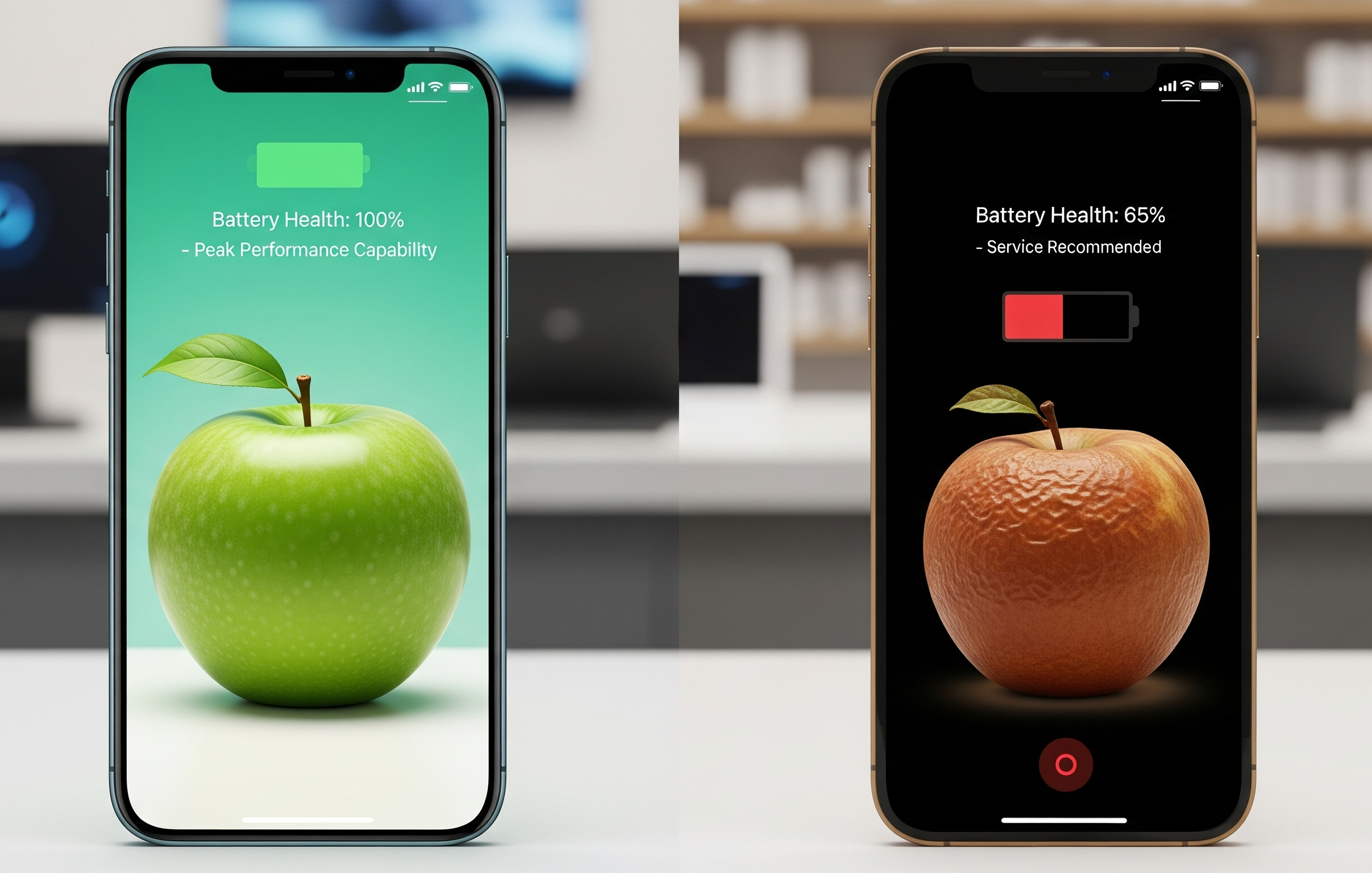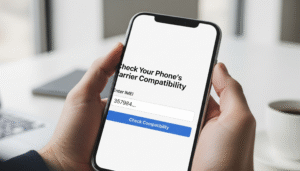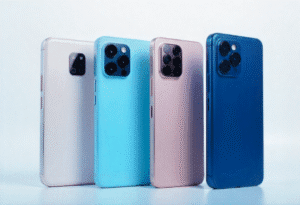Battery health is one of the most important factors when buying a used iPhone. This guide explains how Apple measures battery health, what numbers are acceptable for different buyers, how to test a used phone’s battery in person and remotely, and practical steps to prolong battery life. If you are shopping for a used iPhone, understanding battery health will save you time and money.
Why battery health matters when buying a used iPhone
Battery health affects nearly every practical aspect of owning a phone. A degraded battery reduces daily runtime, increases the likelihood of unexpected shutdowns, and can lead to slower device performance if the phone reduces peak CPU speed to avoid instability. For buyers of used iPhones, the battery health percentage—reported in Settings by Apple—gives a quick signal of remaining battery life and expected longevity. But that number alone is not the whole story. You also need to consider capacity curve, cycle count, how the phone has been used, and whether the battery has been replaced with a genuine Apple or high-quality third-party unit. A device with 88 percent maximum capacity might be perfectly fine for someone who charges nightly and uses the phone moderately. For a heavy user or someone who wants two-day battery life, that same device may be undesirable. Knowing how to read and test battery health helps you make an informed choice rather than rely on vague seller claims.
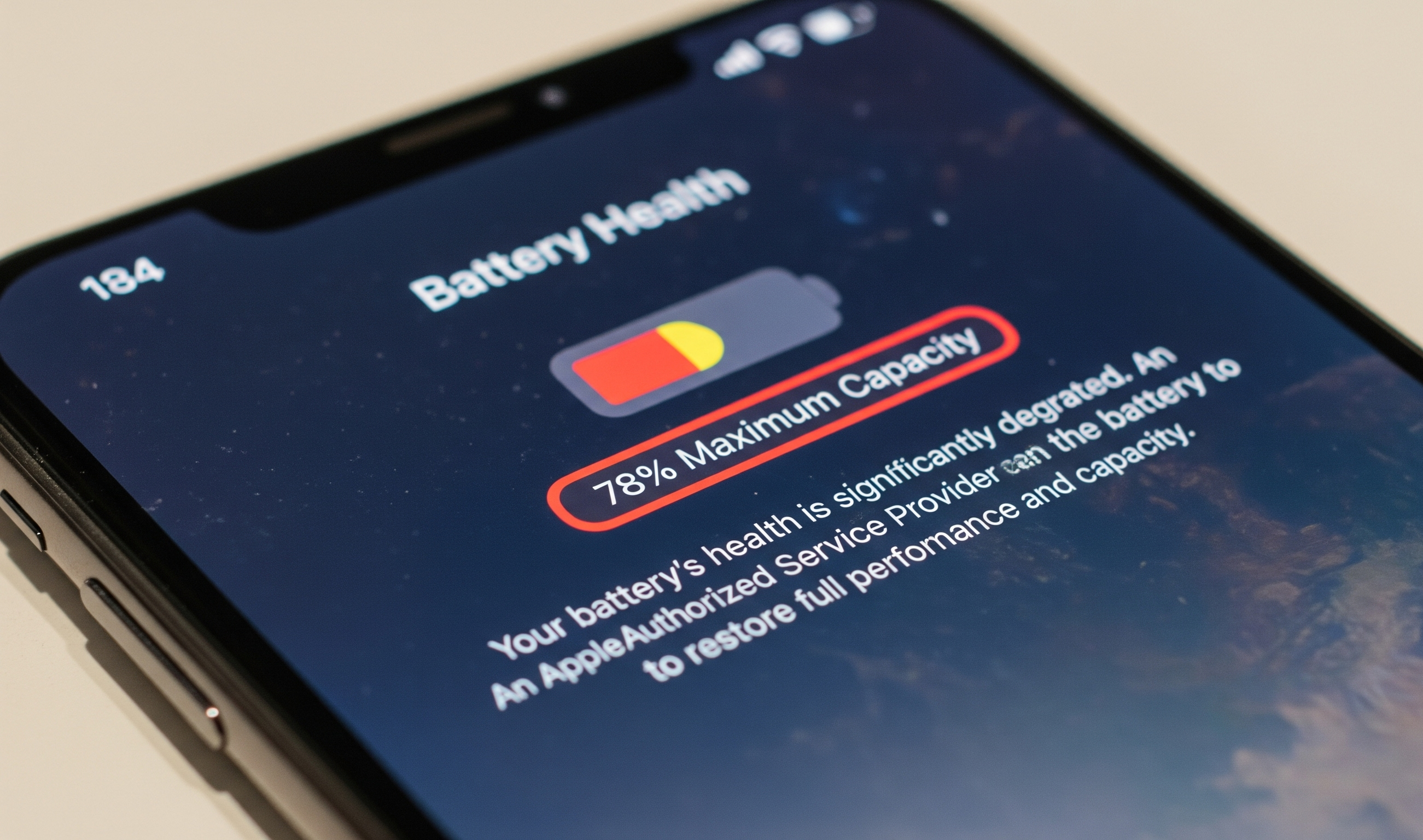
How Apple reports battery health
Apple exposes battery information in Settings → Battery → Battery Health. The two primary items you will see are Maximum Capacity, reported as a percentage, and Peak Performance Capability, which indicates whether the phone has experienced performance management due to battery issues. Maximum Capacity compares current battery capacity to when the battery was new. A freshly manufactured battery will show close to 100 percent. Over time, as the battery goes through charge cycles, that percentage falls. Apple considers a battery in normal chemical aging to retain up to 80 percent of its original capacity after 500 full charge cycles for iPhones sold in recent years. That is a guideline rather than a hard rule. Peak Performance Capability tells you whether iOS has applied performance management to prevent unexpected shutdowns. If the phone shows a message about performance management, it means the device has experienced conditions that made the system throttle peak performance to stay stable. This is important context because peak throttling can make a phone feel slower even when the capacity number seems acceptable.
What battery percentages mean in practical terms
Interpreting the percentage depends on your expectations. For casual users who check email, browse, and use social apps, a used iPhone with 80 to 90 percent maximum capacity will often be acceptable. It may need a charge by evening but will handle a full day for moderate use. For heavy users who game, stream video, or rely on extended GPS use, aim for 90 percent or higher. If you plan to keep the phone for several years, a higher battery capacity now translates to longer useful life. Remember that the percentage does not show cycle count or how the battery performs under sustained load. Two phones with 85 percent may behave differently: one could be stable and deliver consistent runtime, the other might exhibit voltage drops and shutdowns under peak loads. That is why a visual inspection and practical tests matter as much as the number.
How to test battery health in person
When you can inspect a used iPhone physically, follow a short sequence of practical checks. First, ask the seller to open Settings → Battery → Battery Health and show you the Maximum Capacity and Peak Performance status. Confirm that the percentage matches any photo or listing information and that Peak Performance Capability is reported as normal. Next, observe the phone under real use. Open a few heavy apps—stream a short video, open the camera and take several photos, or run a benchmarking or stress test if the seller is agreeable. Watch for sudden drops in percentage or surprising shutdowns. A small, temporary decrease in visible percentage during heavy use is normal, but abrupt shutdowns are a red flag. Check for excessive heat during these tests. Batteries that overheat quickly may have underlying issues or poor replacement parts. If the seller allows it, run one or two charge cycles while you are present. Plug the device into a charger and verify it charges predictably from a low percentage to a higher one. Finally, inspect whether the battery has been replaced. Look for service history stickers inside the device if the seller opened it, or ask for a repair receipt. Third-party replacements are not inherently bad but ask whether the replacement unit was OEM quality and request proof if possible.
How to check battery health remotely
Remote purchases are common, so you must know what to request from a seller. Ask for a clear screenshot of Settings → Battery → Battery Health taken on the device itself. Screenshots can be faked, so request an additional short video where the seller scrolls to the Battery Health screen and taps through Settings while speaking the IMEI or serial number aloud. This ties the status to the specific device. Ask for a brief video showing the phone being plugged in from a low battery level so you can see the charging behavior. If the seller is unwilling to provide these simple proofs, be cautious. For refurbished phones sold by certified sellers, look for explicit battery replacement records stating the battery was replaced with an OEM or certified component. Also request the quoted battery capacity and confirm the return policy in case the device arrives with worse battery performance than advertised.
Cycle count and why it matters
Apple does not show cycle count in basic Settings, but cycle count is a useful metric if you can access it. Cycle count measures full equivalent charges. Two half charges equal one cycle. A battery with a high cycle count is closer to its end of useful life than a battery with a lower count even if the maximum capacity looks similar. If a seller can provide the cycle count, use it to check consistency. For instance, a three-year-old phone with 120 cycles is in far better shape than a one-year-old device with 500 cycles. You can obtain cycle count from the device using diagnostic tools or by asking certified refurbishers to provide the number. This is often available when sellers pull logs or run one of several free utilities on a Mac or PC. Cycle count combined with maximum capacity gives a fuller picture.
Battery replacement — when it makes sense
Replacing the battery is an affordable way to extend a used iPhone’s useful life. If you plan to keep a phone for multiple years, a battery replacement performed with genuine or high-quality cells can restore runtime and eliminate performance throttling. For buyers, a device with a recent battery replacement performed by a trusted repair shop or Apple is often more attractive than one with a higher percentage but no documented service. When a replacement has occurred, ask for the service receipt and confirm whether OEM parts were used. Beware of very low-cost replacements using cheap cells as they can cause rapid degradation or safety issues. If a seller offers the price advantage because they did not replace the battery, factor the cost of a replacement into your offer or request an adjustment.
Practical tips to prolong battery life after purchase
Once you own the phone, you can follow simple habits that prolong battery lifespan. Avoid deep cycle extremes on a regular basis; keeping the battery between roughly 20 and 80 percent for daily use reduces stress. Use optimized battery charging settings in iOS to slow charging when you charge overnight. Avoid exposing the device to sustained high heat, such as leaving it in a hot car. Reduce background activity for apps you don’t need, and favor Wi-Fi over cellular when possible because heavy cellular use is often more power intensive. If you are storing a device long term, store it at around 50 percent and in a cool, dry place. These practices do not stop aging but slow it down.
Common battery red flags and how to handle them
Several signs suggest you should avoid a purchase or demand a price reduction. Rapid percentage drops during light use, unexplained shutdowns, and high heat during light tasks are all red flags. Another warning sign is a mismatch between the device serial or IMEI and service records; always confirm the device identity matches the documentation. If the phone reports performance management or shows a significantly reduced maximum capacity, ask the seller to lower their price or offer a battery replacement before purchase. For marketplace purchases, insist on a clear return policy that covers battery problems. At UsedPhonesUSA we document battery condition and provide warranty coverage to protect buyers. If a seller refuses to allow basic battery checks, consider that a strong reason to walk away.
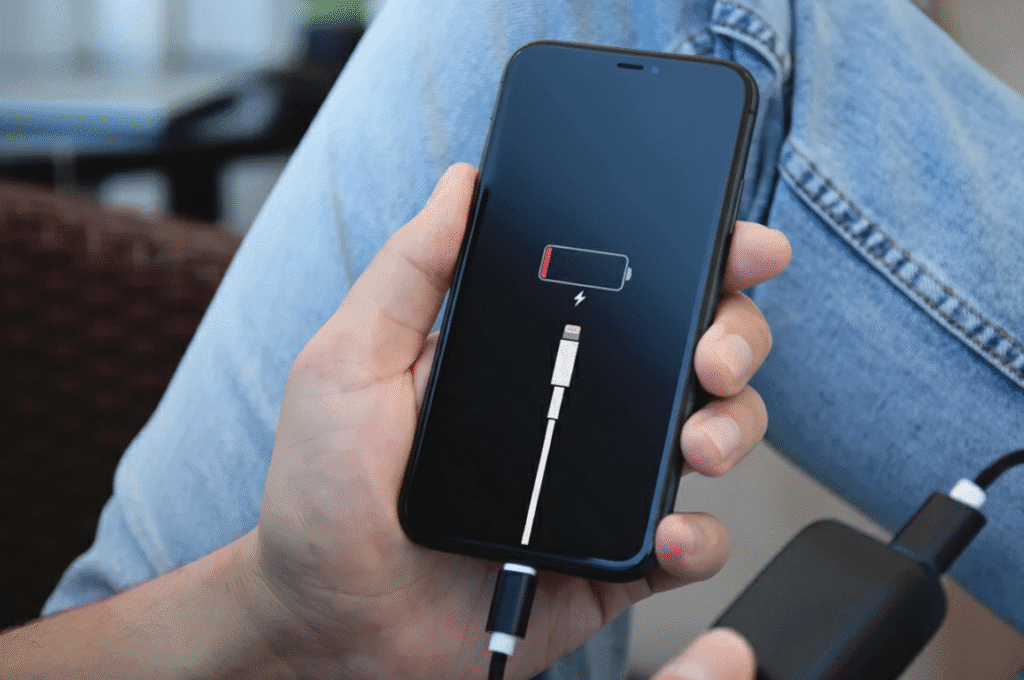
Quick checklist for iPhone battery checks
- Ask for a live video or screenshot of Settings → Battery → Battery Health on the device.
- Confirm Peak Performance Capability shows normal operation, or understand the implications if it does not.
- Request a short demonstration of charging behavior from a low state to confirm predictable charging.
- When possible, get cycle count from a diagnostic utility or service report.
- Inspect for repair receipts if a battery replacement was performed and verify part quality.
- Confirm return policy and warranty coverage for battery-related issues before purchase.
FAQ
Is 80 percent battery health acceptable on a used iPhone?
Yes. Eighty percent is often considered a reasonable lower threshold for acceptable battery health on a used iPhone. It will normally provide a full day of moderate use but may not be ideal for heavy users. Also check peak performance status and cycle count to get the full picture.
How much does it cost to replace an iPhone battery?
Battery replacement costs vary. If you go through Apple, prices are set by model and are often higher than third-party services. Independent repair shops frequently offer lower prices but verify the quality of replacement cells. Consider replacement cost when evaluating a used device with lower battery health.
Can a battery percentage be faked?
A clever seller can present misleading screenshots. That is why you should request a live video and ask for corroborating evidence such as charging behavior, serial number checks, and service receipts. When buying from a certified seller, the odds of deception are much lower.
If you want a faster path to a safe purchase, our inventory lists battery condition clearly and we provide warranty coverage on most phones. Browse certified iPhones at UsedPhonesUSA Shop, or check warranty details at Warranty & Returns. For compatibility questions use our tool at Check Compatibility.

